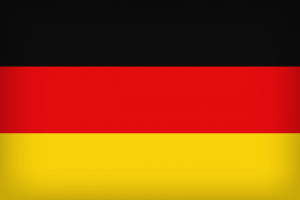Language/German/Grammar/Noun-and-Gender
 Հայերէն
Հայերէն Български език
Български език 官话
官话 官話
官話 Hrvatski jezik
Hrvatski jezik Český jazyk
Český jazyk Nederlands
Nederlands English
English Suomen kieli
Suomen kieli Français
Français עברית
עברית हिन्दी
हिन्दी Magyar
Magyar Bahasa Indonesia
Bahasa Indonesia فارسی
فارسی Italiano
Italiano 日本語
日本語 Қазақ тілі
Қазақ тілі 한국어
한국어 Lietuvių kalba
Lietuvių kalba Νέα Ελληνικά
Νέα Ελληνικά Şimali Azərbaycanlılar
Şimali Azərbaycanlılar Język polski
Język polski Português
Português Limba Română
Limba Română Русский язык
Русский язык Српски
Српски Español
Español العربية القياسية
العربية القياسية Svenska
Svenska Wikang Tagalog
Wikang Tagalog தமிழ்
தமிழ் ภาษาไทย
ภาษาไทย Türkçe
Türkçe Українська мова
Українська мова Urdu
Urdu Tiếng Việt
Tiếng ViệtAs a German language teacher of 20 years, I have seen many students struggle with grasping the concept of noun gender. In this lesson, we will dive deeper into understanding the relationship between nouns and their genders so that students can build more complex sentences.
Nouns and Gender
In German, each noun is assigned a gender: masculine, feminine, or neuter. This is important to note because the gender of the noun affects the articles, pronouns, and adjectives used in sentences that refer to that noun.
It's important to learn the gender of a noun through memorization, as there are no hard and fast rules for determining gender. However, there are some tendencies that can help students guess the gender of a new noun. For example, most nouns ending in -heit or -keit are feminine, while most those ending in -chen or -lein are neuter.
It's important to note that in German, the gender of a noun has no relation to the sex of the object it represents. For example, "Mädchen" (girl) is a neuter noun, while "Frau" (woman) is a feminine noun.
Here are some common gender associations:
- Masculine: most male persons and animals; most words ending in -er, -or, -ismus, -ist, -ig
- Feminine: most female persons and animals; most words ending in -in, -ei, -heit, -keit, -schaft, -ung
- Neuter: most things without a natural gender like objects or abstract nouns and most words ending in -chen, -lein, -l, -tum
For example, the German word for "book" is "Buch" and is a neuter noun. Therefore, when using articles and adjectives to describe "Buch," neuter forms must be used. "Das Buch ist toll" (The book is great).
The table below shows examples of nouns and their respective gender:
| German | Pronunciation | Gender | English |
|---|---|---|---|
| Buch | ['buːç] | neuter | book |
| Katze | ['kat͡sə] | feminine | cat |
| Hund | [hʊnt] | masculine | dog |
Definite and Indefinite Articles and Noun Gender
The gender of a noun affects the articles used in sentences that refer to that noun. For example, "the" in English has only one form, while in German, it has three: "der" (masculine), "die" (feminine), and "das" (neuter). Likewise, the indefinite articles "a" or "an" in English have no gender, while in German, they are "ein" (masculine and neuter) and "eine" (feminine).
Using the example "Das Buch ist toll" (The book is great), if we change the gender of the noun to a feminine noun like "Frau" (woman), the article and adjective must also change: "Die Frau ist toll" (The woman is great).
It's also important to note that the gender changes of adjectives and articles depending on the case used in the sentence. We will cover the concept of cases in a later lesson.
Tips for Learning Noun Gender
- Study vocabulary with the corresponding article. Instead of just memorizing "Buch" (book), learn it as "das Buch" (the book), so you can automatically associate the noun with its gender. - Write down new nouns with their gender in a notebook or flashcards to practice regularly. - Use color coding or other memory aids to help retain the information. - Practice, practice, practice. The more you encounter and use German nouns in context, the easier it becomes to associate gender with the noun.
As with all German grammar concepts, consistent practice is key to mastering noun gender. Don't be discouraged if it takes time to internalize the associations. With patience and persistence, you will reach A1 fluency before you know it.
Sources

